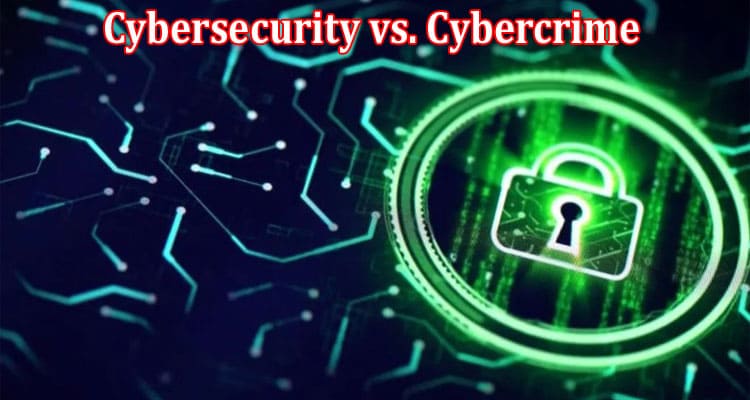Cybersecurity vs. Cybercrime: The Eternal Battle for Digital Protection
The surge of digitization, widespread adoption of online services, and exponential growth of the internet in the past few decades has significantly impacted our lives. With this digital revolution comes an unseen adversary—cybercrime. A constant battle between cybersecurity and cybercrime ensues as they both evolve concurrently. This article sheds light on the ongoing conflict, illustrating the significance of cybersecurity measures in the fight against cybercrime.
Understanding Cybercrime and Cybersecurity
The Threat of Cybercrime
Cybercrime constitutes illicit activities carried out using computers or digital networks with the intent to cause harm. These criminal actions can range from cyber theft, fraud, and cyberstalking to large-scale operations like cyber terrorism and cyber warfare. In recent years, the complexity and sophistication of cybercrimes have risen significantly, leading to substantial financial losses and disruption of services.
The Shield of Cybersecurity
Cybersecurity means defending computers, servers, mobile devices, electronic systems, networks, and data from digital attacks or unauthorized access. It incorporates numerous methods, procedures, and technologies to ensure data confidentiality, integrity, and availability. The goal is to establish protective measures that counteract cyber threats and mitigate the potential damage caused by cyberattacks.
The Emergence of Cybersecurity and Cybercrime
The interplay between cybersecurity and cybercrime is an escalating game of cat and mouse. Cybercriminals develop advanced tactics to bypass security measures, while cybersecurity experts strive to stay ahead, identifying potential threats and strengthening defenses.
Evolving Cyber Threats
Cybercriminals continually refine their strategies, exploiting new vulnerabilities and adapting to security measures. Some common tactics include phishing, malware, ransomware, and Distributed Denial of Service (DDoS) attacks. Advanced Persistent Threats (APTs), where attackers gain access to a system and remain undetected for an extended period, represent a particularly alarming trend.
Progress in Cybersecurity Measures
Cybersecurity techniques have also evolved in response, incorporating advanced technologies such as artificial intelligence (AI) and machine learning to enhance threat detection and response. Network segmentation, encryption, multi-factor authentication, and incident response plans are measures to strengthen defenses.
In the wake of these advancements, one vital tool is an ad blocker. Besides providing a clutter-free browsing experience, ad blockers serve as a layer of security. They inhibit the delivery of malvertising—malicious advertising containing malware or scams, preventing potential threats from reaching users.
Cybersecurity Challenges and Solutions
Despite significant progress in cybersecurity, challenges remain. An array of issues, including the ever-evolving nature of cyber threats, increasing interconnectivity, human error, and shortage of cybersecurity professionals, complicate the battle against cybercrime.
Fostering a Cybersecurity Culture
Organizations must foster a cybersecurity culture to mitigate the risk of cyber threats. This involves regular training and awareness programs to inform employees about potential risks and appropriate preventative actions. Employees, often the first line of defense, need to recognize common threats like phishing emails and avoid risky online behaviors.
Adopting a Proactive Approach
Prevention is always better than cure, especially in cybersecurity. Organizations must adopt a proactive approach, identifying potential threats and vulnerabilities before an attack occurs. This can be achieved through penetration testings or regular audits.
Leveraging Emerging Technologies
Emerging technologies like AI, blockchain, and the Internet of Things (IoT) present new opportunities for strengthening cybersecurity. AI can help detect and respond to threats more quickly, blockchain can ensure data integrity, and secure IoT devices can help prevent a common entry point for cybercriminals.
The Role of Legislation in Cybersecurity
Governments worldwide have recognized the imperative need to suppress cybercrime. As such, several laws and regulations have been instituted to scare away cyber criminals and encourage the implementation of robust cybersecurity measures in organizations. These laws often include penalties for non-compliance and reward whistleblowing on improper data handling or system management practices. While legislation varies across jurisdictions, the common thread is acknowledging the cyber threat and the active steps toward reducing it.
International Collaboration
Given the global nature of the internet, it’s clear that any single entity cannot win the battle against cybercrime. International collaboration is crucial, whether through law enforcement agencies sharing intelligence or tech companies working together to develop better security measures. A more connected and cooperative global cybersecurity community helps to build resilience against threats and makes it harder for cybercriminals to operate across borders.
The Future of Cybersecurity
In the face of escalating cyber threats, the cybersecurity landscape needs to remain dynamic, adapting to new challenges and leveraging advancements in technology.
Predictive Cybersecurity
The future of cybersecurity lies in predictive measures. With the help of AI and machine learning, cybersecurity systems of the future will predict threats before they happen. This entails analyzing patterns and trends in vast amounts of data to identify potential threats and take proactive measures.
Every User Is a Cybersecurity Warrior
Each internet user plays a critical role in the battle against cybercrime. By practicing safe browsing habits, keeping software up-to-date, and being cautious with personal information, users can make it difficult for cybercriminals to succeed. Furthermore, they should report any suspicious activities and stay updated about the latest cyber threats.




